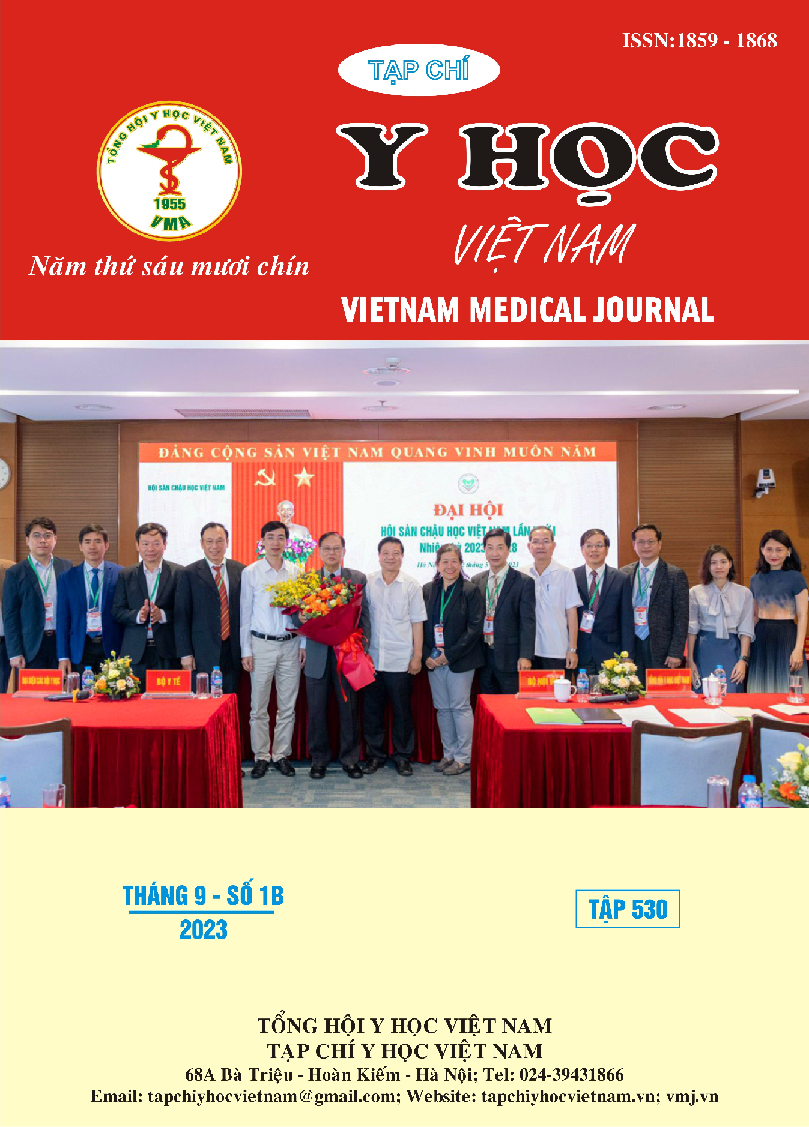APPLICATION OF Gap-PCR AND C-ARMS-PCR IN DETECTING ALPHA GLOBIN GENE MUTATIONS OF PATIENTS WITH HEMOGLOBIN H DISEASE
Main Article Content
Abstract
Background: Hemoglobin H (HbH) disease is α-thalassemia intermedia - an autosomal recessive inherited disease and typified by the reduced or absent production of the α-globin chains in hemoglobin molecule (Hb). HbH disease is caused by a combination of mutations on three α-globin genes, determining the presence of these mutations helps to accurately diagnose HbH disease and genetic counseling for the patient's family. Objectives: Determining the rate of α-globin gene mutations and genotypes of HbH disease by using Gap-polymerase chain reaction (Gap-PCR) and Combine-amplification refractory mutation system-polymerase chain reaction (C-ARMS-PCR). Materials and methods: This cross-sectional descriptive study was conducted, 41 HbH disease patients who went to Can Tho city Hematology Blood Transfusion Hospital for examination and treatment were surveyed for 06 common α-globin mutations by Gap-PCR and C-ARMS-PCR. Results: This Study identified 5 types of mutations including --SEA, -α3.7, αCS, -α4.2, αQS with the corresponding rate of 54.7%; 18.7%, 17.3%, 8.0% and 1.3%, --αTHAI mutation has not been recorded. (--SEA/-α3.7) genotype was the most common with 34.2%, followed by (--SEA/αCSα) accounting for 31.7%, (--SEA/-α4.2) with 14.6%, (--SEA/αQSα) with 2.4%, and the remaining 17.2% only identified one deletion of α-globin gen mutation with genotype (--SEA/αα). Conclusions: Gap-PCR and C-ARMS-PCR are effective for determining common α-globin gene mutations in HbH disease patients.
Article Details
Keywords
HbH disease, α-globin, Gap-PCR, C-ARMS-PCR.
References
2. Ngô Diễm Ngọc (2018), Nghiên cứu đặc điểm lâm sàng, kiểu gen của người mắc bệnh HbH và chẩn đoán trước sinh bệnh α-thalassemia, Luận án tiến sĩ, Đại học Y Hà Nội.
3. He S, Zhang Q, Chen B Y, et al (2015), "Genotypes and clinical features of 595 children with HbH disease in Guangxi, China", Zhongguo Dang Dai Er Ke Za Zhi, 17(9), 908-911.
4. Luo S, Chen X, Chen L, et al (2020), "Analysis of Hb levels and degree of anemia in relation to genotype in 615 patients with hemoglobin H disease", Expert Rev Hematol, 13(9), 1027-1033.
5. Nong X, Xu G, Li J, et al (2020), "Study of the genotypic and hematological feature of hemoglobin H disease in West Guangxi area", Zhonghua Yi Xue Yi Chuan Xue Za Zhi, 37(12), 1326-1330.
6. Pornprasert S, Salaeh N A, Tookjai M, et al (2018), "Hematological Analysis in Thai Samples With Deletional and Nondeletional HbH Diseases", Lab Med, 49(2), 154-159.
7. Traivaree C, Boonyawat B, Monsereenusorn C, et al (2018), "Clinical and molecular genetic features of Hb H and AE Bart's diseases in central Thai children", Appl Clin Genet, 11, 23-30.
8. Wee Y C, Tan K L, Chua K H, et al (2009), "Molecular characterisation of Haemoglobin Constant Spring and Haemoglobin Quong Sze with a Combine-Amplification Refractory Mutation System", Malays J Med Sci, 16(3), 21-28.


